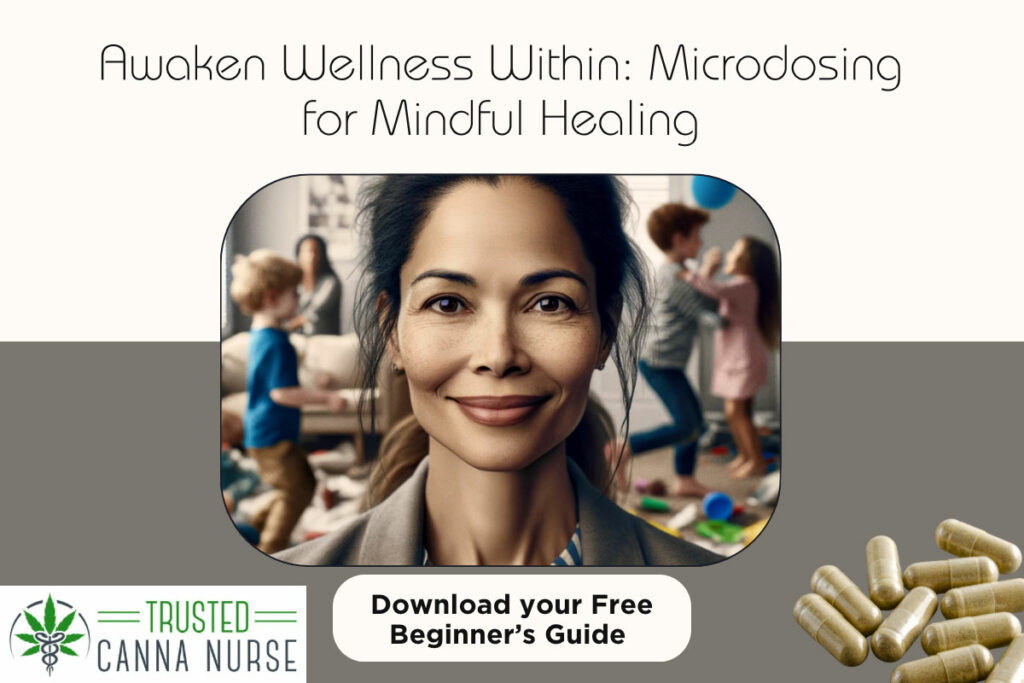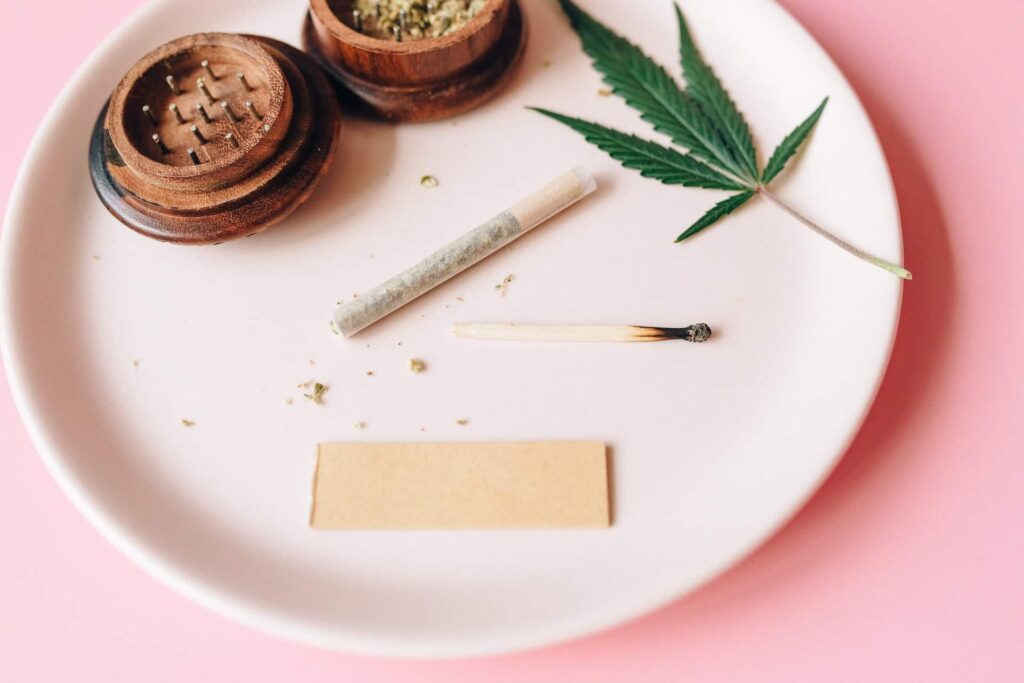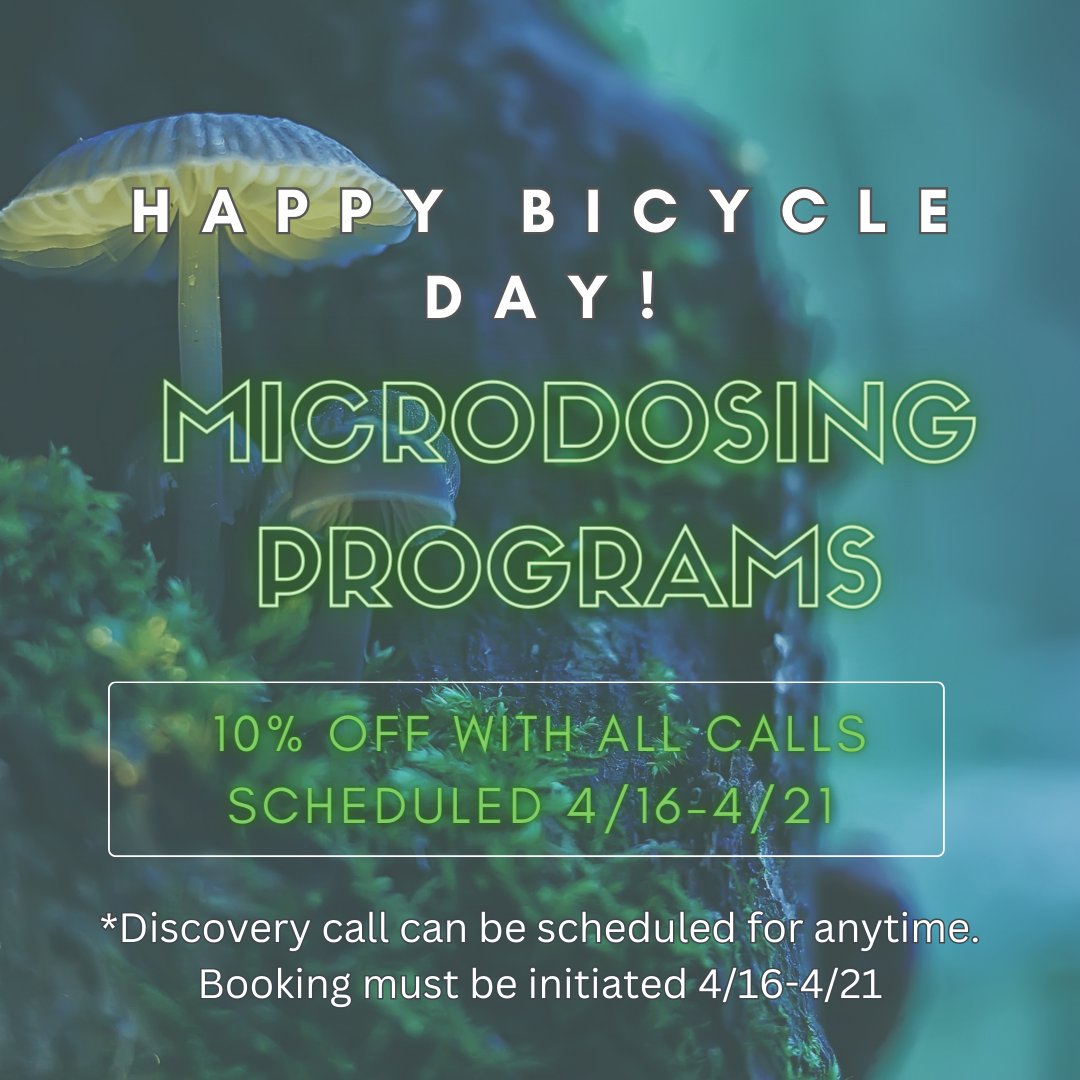Microdosing THC has gained popularity among cannabis enthusiasts for providing the medical benefits of the compound without its psychoactive side effects. This practice involves consuming small amounts of THC, typically between 1-5mg, in a manner that avoids the high associated with traditional cannabis consumption. The goal is to experience positive effects on mood, concentration, and creativity without the potentially distracting or impairing impact of feeling stoned.
To achieve the perfect microdose, factors such as an individual’s previous experience with cannabis, tolerance to THC, and the number of endocannabinoid receptors present in their body must be taken into consideration. Experts recommend starting with a low dosage and gradually increasing it over time, a process known as titration. This method allows users to find their optimal microdose that balances the desired therapeutic benefits while avoiding overwhelming psychoactive effects.
Microdosing can be implemented using various methods, such as edibles, tinctures, or vaporizers, which cater to the user’s personal preferences and lifestyle. As the cannabis industry continues to evolve, incorporating THC microdosing into one’s routine provides an opportunity to explore an alternative way of leveraging the plant’s potential health benefits, while minimizing any unwanted experiences.
Understanding THC Microdosing
Microdosing is a method of consuming cannabis that involves taking small amounts of THC over a period of time. This approach has gained popularity in recent years as a way to experience the therapeutic effects of cannabis without the overwhelming sensations of a high dose.
The goal of microdosing THC is to consume just enough to produce desired effects, such as pain relief or reduced anxiety, while avoiding the psychoactive effects that can interfere with daily activities. This balance allows individuals to benefit from the therapeutic properties of cannabis while maintaining a clear and focused mind.
There is no one-size-fits-all approach to microdosing, as individual tolerance levels can vary significantly. Generally speaking, a microdose of THC ranges from 1 to 5 milligrams. It is crucial for users to start with low doses and gradually increase to find their optimal dosage.
In some cases, microdosing may be combined with CBD, the non-psychoactive component of cannabis, to enhance the therapeutic effects. CBD is known for its anti-inflammatory, analgesic, and anxiolytic properties, and when used in conjunction with THC, it may result in a more balanced experience.
The frequency of microdosing can also vary per individual, with some choosing to take small doses throughout the day, while others might prefer a single daily dose, or even microdosing every other day. It is important to experiment and find the schedule that works best for each person’s unique needs and preferences.
Microdosing THC can be an effective way to harness the therapeutic potential of cannabis for a variety of conditions, without the traditionally associated high. By carefully adjusting dosage and frequency, individuals can create a tailored experience that suits their specific physical and emotional needs.

The History of Microdosing THC
Microdosing THC has its roots in the broader concept of microdosing psychedelic substances. The practice began with Albert Hofmann, a Swiss pharmacological researcher who accidentally synthesized LSD in 1938. This event marked the beginning of a second wave of psychedelics in Western society and spurred research into these substances, including the famous counter-culture or hippie movement.
Microdosing, as a practice, was initially developed for administering low doses of LSD and psilocybin mushrooms for therapeutic purposes. With time, the concept of microdosing evolved and began to be applied to cannabis consumption, focusing on the primary psychoactive compound, tetrahydrocannabinol (THC). This shift was driven by the growing understanding of the medicinal benefits of cannabis and the desire to experience these benefits without the euphoric effects often associated with higher dosages.
The practice of microdosing THC seeks to harness the therapeutic potential of cannabis without generating the mind-altering effects commonly associated with marijuana use, such as euphoria, relaxation, and creativity. The core idea is that by consuming minimal amounts of THC, users can still achieve these benefits without the accompanying psychoactive experiences. This approach has gained traction in recent years as numerous cannabis users expressed interest in experiencing the plant’s benefits without the high.
In summary, microdosing THC has its origins in the practice of microdosing psychedelic substances, such as LSD and psilocybin mushrooms. As research into the therapeutic potential of marijuana advanced, the concept of microdosing evolved to encompass THC. This approach allows users to benefit from the medicinal properties of cannabis without the high traditionally associated with marijuana use.
The Science Behind Microdosing THC
Effects on the Brain
Microdosing THC involves consuming small amounts of tetrahydrocannabinol (THC), the psychoactive compound found in cannabis. This administration allows users to experience the benefits of cannabis without the intense psychoactive effects usually associated with its consumption.
When microdosing, THC interacts with the endocannabinoid system (ECS) in our bodies. The ECS plays a crucial role in maintaining homeostasis, which involves regulating various physiological functions such as mood, pain, sleep, and appetite. It also affects the release of neurotransmitters such as dopamine and serotonin. By binding to the CB1 and CB2 cannabinoid receptors, microdosing THC can modulate their activity, enabling a delicate balance between excitation and inhibition of neuronal activity.
Potential Health Benefits
Microdosing THC may offer several health benefits, particularly due to its influence on the ECS. Some of the potential benefits include:
- Anxiety and stress reduction: Controlled microdosing of THC can help individuals struggling with anxiety and stress by modulating the release of neurotransmitters, resulting in a calming effect on mood and emotions.
- Pain management: The analgesic properties of THC can help in managing chronic pain conditions by modulating pain signals within the nervous system.
- Improved sleep: THC has been reported to aid in promoting relaxation and sleep when used in low doses. This effect can be particularly beneficial for those suffering from insomnia or other sleep-related disorders.
- Enhanced focus and creativity: Microdosing THC might improve cognitive functions such as focus, creativity, and divergent thinking without causing cognitive impairments typically associated with higher doses of THC.
It is essential to note that microdosing THC may not suit everyone and that individual experiences may vary. However, it can be an effective and promising way to harness the therapeutic potential of cannabis for a wide range of conditions.
Practical Guide to THC Microdosing
Choosing the Right Strain
When microdosing THC, it’s important to choose the right strain of cannabis. Since the goal is to experience the therapeutic benefits without feeling too high or uncomfortable, opt for strains that have a balanced ratio of THC and CBD. CBD can help counteract some of the psychoactive effects of THC, allowing for a more manageable and controlled experience.
Some strains to consider for microdosing are:
- Harlequin: A well-balanced strain with a 5:2 CBD to THC ratio, known for its clear-headed and focused effects.
- ACDC: A high-CBD strain with a CBD to THC ratio of 20:1, providing mild relaxation without overwhelming psychoactive effects.
- Blue Dream: A popular hybrid strain with gentle, uplifting effects and an even balance of THC and CBD.
Determining Your Ideal Dose
Once you have selected a suitable strain, the next step is to determine your ideal dose for microdosing. Keep in mind that the optimal dosage will vary from person to person, depending on factors such as body weight, tolerance, and desired effects. Start by taking a very low dose (1-2.5 mg of THC) and gradually increase it over time while closely monitoring how you feel. Be patient and give your body time to adjust before increasing the dose further.
Here’s a basic guideline to help you begin:
- 1-2.5 mg THC: This is considered a low dose, suitable for beginners or those sensitive to THC.
- 2.5-5 mg THC: A moderate dose, which may be more appropriate for individuals who have some experience with cannabis or require stronger relief.
- 5-10 mg THC: A higher dose, generally not recommended for microdosing but may be suitable for those with a higher tolerance or specific therapeutic needs.
Methods of Microdosing
There are several methods for microdosing THC, each with their own advantages and disadvantages.
- Tinctures: Liquid extracts that can be taken sublingually (under the tongue) or added to food and drinks. They allow for precise dosing and typically have a fast onset of effects.
- Edibles: These products, like gummies or chocolate, offer a discreet and convenient way to microdose THC. However, their onset time can be slower and finding consistent, low-dose products can be challenging.
- Vaporizers: Vaporizing cannabis allows for near-instant effects and precise dosing, making it a popular method for microdosing. Ensure that you use a vaporizer designed for cannabis flower or concentrates to avoid combustion and unwanted toxins.
No matter which method you choose, always remember to start low and go slow, giving yourself time to adjust and find the optimal THC microdosing routine for your unique needs and preferences.
Perspectives on Microdosing THC
Medical Standpoint
Microdosing THC can offer multiple therapeutic benefits for medical cannabis patients. By taking small doses of THC, typically ranging from 1-2.5 milligrams per dose, patients can reap the benefits without experiencing the psychoactive effects often associated with cannabis consumption. Starting low and gradually increasing the dosage allows individuals to find the optimal amount that provides the desired relief without causing significant psychoactive experiences.
The method of microdosing THC has found popularity among medical cannabis consumers for various reasons. It potentially enables users to manage conditions such as pain, anxiety, depression, and stress more effectively without interfering with their daily lives. Peak-performance enthusiasts and individuals looking to enhance their cognitive and creative abilities have also turned to microdosing for these potential benefits.
Recreational Use
In recreational use, microdosing THC has arisen as an alternative to traditional cannabis consumption, with the goal of enjoying the plant’s subtle benefits without experiencing a strong psychoactive effect. Recreational users who are aiming to minimize the side effects such as anxiety and paranoia sometimes associated with higher doses of THC may find microdosing particularly appealing.
One way microdosing has caught on is due to its potential ability to provide a mild, sustained sense of relaxation and well-being without the sometimes overwhelming high that comes with consuming larger quantities of THC. As a result, recreational users are continuously exploring new ways to incorporate microdosing methods into their lifestyle, creating unique experiences tailored to their preferences and circumstances.
Possible Side Effects and Precautions
When microdosing THC, it is important to be aware of the possible side effects and take precautions to minimize them. Although microdosing aims to deliver the therapeutic benefits of cannabis without its psychoactive effects, some users may still experience mild side effects.
Dry mouth and eyes: One of the most common side effects of THC consumption is dry mouth, also known as “cottonmouth,” and dry eyes. This occurs as a result of decreased saliva and tear production. To alleviate these symptoms, users are advised to drink plenty of water and use hydrating eye drops as needed.
Mild dizziness or lightheadedness: Some users may experience mild dizziness or lightheadedness when microdosing THC. To minimize the risk of fainting or falling, it is essential to move slowly, particularly when transitioning from sitting to standing positions. If dizziness persists or becomes severe, consider reducing the microdose amount or discontinuing use until symptoms subside.
Increased heart rate: THC may cause an increase in heart rate, especially for those with pre-existing heart conditions. It is important to monitor heart rate when microdosing THC and to consult with a healthcare professional if heart palpitations or chest pain occur.
Mild anxiety or paranoia: While microdosing aims to minimize the psychoactive effects of THC, some users may still experience mild anxiety or paranoia. To manage these symptoms, users are encouraged to practice breathing exercises, engage in meditation, or try lowering the microdose amount.
When microdosing THC, it’s crucial to start low and go slow. This means beginning with a minimal amount of THC and gradually increasing the dosage to reach the desired therapeutic effect without experiencing side effects. Monitoring one’s response to THC microdosing and adjusting the dosage accordingly is essential for a safe and effective experience.
It is necessary to keep in mind the legality of THC in one’s location. Before beginning a microdosing regimen, ensure that the use, possession, and distribution of THC are legal in your jurisdiction.
Legalities of THC Microdosing
Microdosing THC refers to the practice of consuming small, sub-perceptual amounts of tetrahydrocannabinol (THC), the primary psychoactive compound in cannabis. It enables users to experience the medicinal benefits of THC without the strong psychoactive effects commonly associated with marijuana use.
Legality of THC consumption
The legal landscape involving THC microdosing varies significantly depending on the jurisdiction. In the United States, for example, federal law still classifies marijuana as a Schedule I substance, meaning it is deemed illegal for any use under federal law. However, many states have passed legislation to legalize marijuana for medical and/or recreational purposes. Before engaging in microdosing or any form of cannabis consumption, it’s essential to research and abide by local laws and regulations.
Medical marijuana programs
In regions where medical marijuana programs have been implemented, THC microdosing may be incorporated as a complementary therapy for various conditions. Patients who qualify for the pertinent program need to obtain a recommendation from a licensed physician and then register for a medical marijuana card to access the approved forms of cannabis. It’s important to consult a healthcare professional to determine the suitability and legality of THC microdosing as part of your treatment plan.
Recreational use regulations
Areas that have legalized recreational cannabis have set specific guidelines and limits on the amount and circumstances in which an individual may possess or consume marijuana. These regulations often include age restrictions, quantities for personal use, and guidelines for purchasing from licensed dispensaries. Compliance with such rules is essential for those considering microdosing THC for non-medical purposes.
In summary, the legalities of THC microdosing depend on the jurisdiction, purpose (medical or recreational), and adherence to local regulations. It is crucial to stay informed about the applicable laws in your area and consult with a healthcare professional if considering THC microdosing for medical purposes.
The Future of Microdosing THC
The emerging trend of microdosing THC has the potential to revolutionize the way people consume cannabis. As an increasing number of individuals are expressing interest in the therapeutic benefits of cannabis, microdosing provides a viable solution that enables consumers to experience these benefits without the intense psychoactive effects that accompany traditional cannabis consumption.
One major factor driving the shift towards microdosing is the growing understanding of the therapeutic applications of cannabis. Research has shown that microdosing can provide relief from anxiety, pain, and inflammation without inducing a disorienting high. This makes it an attractive option for both new and experienced cannabis users looking for a more controlled and consistent experience.
Another reason for the rise of microdosing THC is the increased access to legal cannabis products and advancements in their formulation. The market has seen the introduction of a wide variety of low-dose edibles, tinctures, and vaping products specifically designed for microdosing. As the demand for these products grows, it is expected that the industry will continue to innovate and refine their offerings, making microdosing more accessible and customizable for consumers.
Microdosing THC aligns with the broader cultural trend of prioritizing wellness and self-care. Many consumers are seeking natural alternatives to pharmaceuticals and exploring ways to incorporate cannabis into their wellness routines. Microdosing allows them to do so in a subtle and easily manageable way, catering to their specific needs and preferences.
The future of microdosing THC appears promising as interest in therapeutic cannabis usage continues to grow, product offerings evolve, and wellness-focused consumers search for personalized and controlled cannabis experiences. This trend may well redefine the way people perceive and consume cannabis in the years to come.
Last Updated on January 4, 2024 by Megan Mbengue, BSN, RN, CHPN


